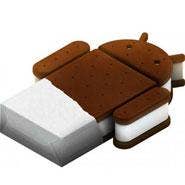Review: Major Speed Bump in Android Version 4

The source code for Android v4.01 for smartphones and tablets was released this week, the first code drop since version 2.x. Among the many user enhancements the Android Ice Cream Sandwich release unveiled in mid-October, are a refined and more intuitive user interface, quicker response to incoming calls, an improved keyboard and spell-checker, more focus control and live effects in the camera app and major improvements in the email client.
"The unified UI framework in Android 4.0 means new UI tools deliver consistent design practices, simplified code and resources, and streamlined development across the range of Android-powered devices," according to the Android developer Web site. And a new modular sharing widget lets developers "quickly embed standard share functionality and UI in the Action Bar of their applications," says the site.
But the feature most noticeable above all in in out tests was performance. Apps now launch faster and are more responsive, and the enhanced browser rivals that of a desktop experience. Upon powering up our Android test device, an Acer Iconia Tab A500, it notified us of the update, and within a few minutes it was downloaded and installed. Post install, the tablet was running Android build 4.010.13_COM_GEN2. Build 4.01 will ship with Samsung's Galaxy Nexus smartphone.
To keep developers in "Good Humor", Ice Cream Sandwich also includes a ton of new stuff for developers, (finally) including a consistent UI framework for tablets, smartphones and other devices. The new framework still delivers interface elements and APIs from version 3.x, including content loaders, notifications and resizable widgets for the home screen, and brings new APIs social networks, calendaring, and visual voicemail.
There's also now an API is for Android Beam, which taps into near-field communications radio on Android devices. NFC allows for sharing just about any kind of information between two devices. When two NFC-enabled 'Droids are within a few inches of each other, they might for example, share their screen, contact or calendar info, join a multiplayer game, chat or video call, or perform a financial transaction. Android Beam also can be used to initiate a transaction over Bluetooth, if for example, a transfer involves a large payload.
Worth noting for enterprise developers, a new VPN client API includes secure credential storage, supports L2TP and IPsec protocols and allows new or existing VPN apps to open secure tunnels, configure routing rules and process packets in and out. A new text-to-speech framework API allows developers to build custom TTS engines available to any app. Another framework API permits WiFi Direct connections to be established between devices regardless of the presence of a hot spot.
Android OS is running on 52 percent of smartphones currently in use, doubling its market share from a year ago, according to a Gartner report released this week. During that same period, the study reportedly shows that sales of Android-based smartphones has nearly tripled, reaching 61 million units in the third quarter of this year, up from 21 million in the same period in 2010.
Market share of Apple's iPhone dropped from 16.6 percent in 2010 to 15 percent in the current period, Gartner said. "Android benefited from more mass-market offerings, a weaker competitive environment and the lack of exciting new products on alternative operating systems such as Windows Phone 7 and RIM," said Roberta Cozza, principal research analyst at Gartner.